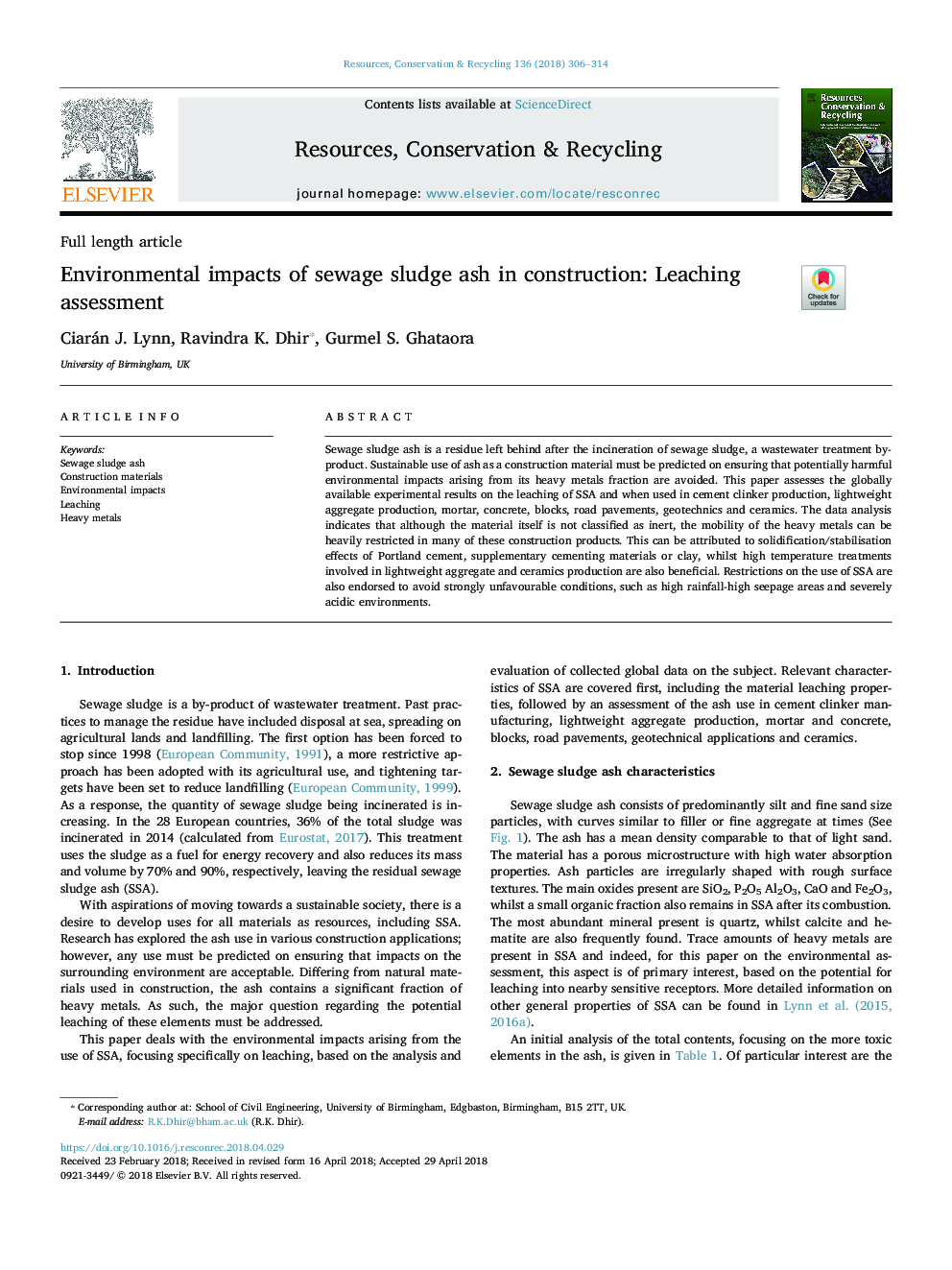| Article ID | Journal | Published Year | Pages | File Type |
|---|---|---|---|---|
| 7494079 | Resources, Conservation and Recycling | 2018 | 9 Pages |
Abstract
Sewage sludge ash is a residue left behind after the incineration of sewage sludge, a wastewater treatment by-product. Sustainable use of ash as a construction material must be predicted on ensuring that potentially harmful environmental impacts arising from its heavy metals fraction are avoided. This paper assesses the globally available experimental results on the leaching of SSA and when used in cement clinker production, lightweight aggregate production, mortar, concrete, blocks, road pavements, geotechnics and ceramics. The data analysis indicates that although the material itself is not classified as inert, the mobility of the heavy metals can be heavily restricted in many of these construction products. This can be attributed to solidification/stabilisation effects of Portland cement, supplementary cementing materials or clay, whilst high temperature treatments involved in lightweight aggregate and ceramics production are also beneficial. Restrictions on the use of SSA are also endorsed to avoid strongly unfavourable conditions, such as high rainfall-high seepage areas and severely acidic environments.
Related Topics
Physical Sciences and Engineering
Energy
Renewable Energy, Sustainability and the Environment
Authors
Ciarán J. Lynn, Ravindra K. Dhir, Gurmel S. Ghataora,
